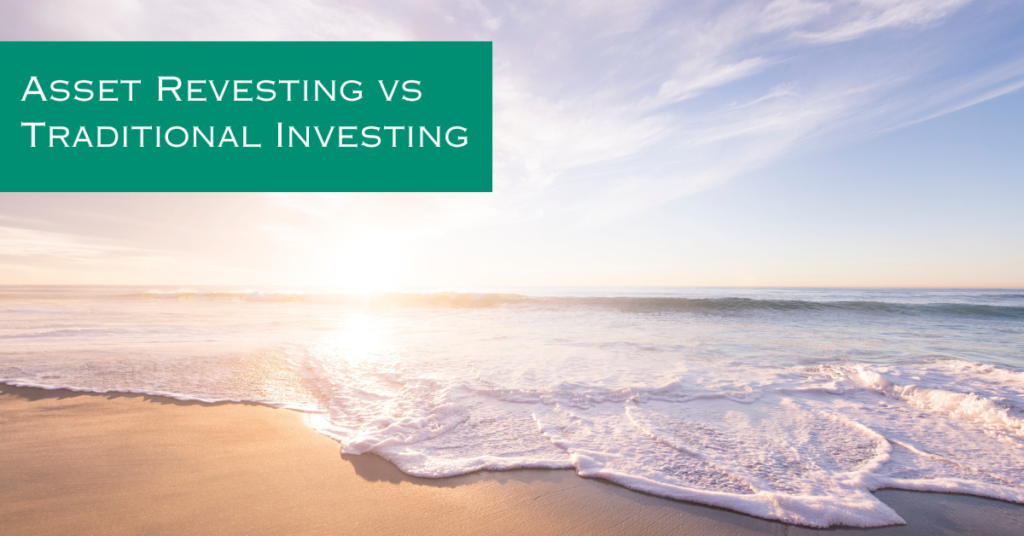A few years ago, I noticed a line of thinking beginning to form surrounding many of the conversations with investors and the psychology behind Stockholm Syndrome. One such investor was Roger. Roger was interested in learning more about how I invest my capital. During our conversation, he told me how he’d accumulated his $1 million-dollar investment account working a blue-collar job his entire life. He put away a few thousand dollars every year for 30+ years and followed the buy-and-hold strategy. It worked for him to build wealth because time was on his side, but it wasn’t sunshine and roses.

While the buy-and-hold worked during the first half of his life, it was challenging to weather bear markets along the way. For example, when stocks topped out in early 2000, the stock market took over seven years to get back to breakeven. During the bear market, Roger spoke with his advisor for investment advice and was told to sit tight, ignore the falling price, and if he held through it, he would be fine. But the financial distress, sleepless nights, and relationship issues he had to endure when he was down more than 50% in only two years were a struggle, to say the least.
Roger then watched his account painfully claw its way back up for another five years as the stock index reached its previous high. But the rollercoaster ride was far from over. Within a month of reaching a new high, the stock market collapsed again for another 1.5 years. This was the 2008 global financial crisis in which he had to watch his investments fall more than 55%.
Once again, Roger called his advisor for support but was much more stressed and concerned this time. He was told the same thing by his advisor, which by following became a root cause of his divorce during the last bear market. The advice was to ignore the bear market, hold, and don’t sell; everything would be alright once the market recovered.
After 13 painful years, the stock market returned to a new high in 2013. This poor man suffered a total of 13 years with no growth and paid his advisor every year for the terrible life-changing experience. And even though the stock market returned to the previous high, the investor was still down 15% because of the assets under management (AUM) fee.
By 2020, Roger was in his 50s. He’d built substantial wealth through his dedication to saving and investing. In 2021 when he closed his eyes, he could see, feel, and smell his retirement, which was just a couple of years away.
But then, stocks topped, and both stocks and bonds plummeted in value. This started to push Roger’s retirement further into the future, and with inflation surging, he needed to downgrade his lifestyle and spending habits. All of this happened within the first few months of 2022. His anxiety rose as he watched his wealth shrink week after week. Finally, he knew something had to be done because there was no way in hell he would postpone his retirement another decade.
Once again, he called his advisor, desperate to protect his retirement. To his surprise, even after telling the advisor about his situation, wants, and needs, the advisor recommended he continue to stick with the buy-and-hold strategy and just wait it out.
You can imagine how Roger felt when he heard the same “advice” for the third time, which didn’t support his current needs or risk tolerance. Roger blew a gasket, fired his advisor, and moved to cash until he could figure out what to do with his investment account. His search led to him calling me to talk about asset revesting. Once I explained how the asset hierarchy and position and risk management from a high beginner level worked, a lightbulb went off, and he had that AHA moment!
Roger was over the moon excited about this newfound knowledge and investment clarity about how to invest for growth without having a large downside risk. He commented about how he had no idea it was possible to avoid market corrections and bear markets. He said buy-and-hold investing was beyond painful, it was torture, and he couldn’t believe that he was brainwashed into thinking that was just an accepted part of investing.
In large part, long-term investors have been brainwashed, and as a result, they struggle to break free of the financial strategies that we were all told to follow since saving the first penny. Thanks to this STOCKholm syndrome, people are so worried about missing out on a stock market rally that they will hold their losing positions and risk their retirement. If this sounds like you, or you identify with Roger’s journey, then look out because the time you have left to get in a better position is dwindling. If you don’t know what you are doing, and you’re investing based on pure emotions (FOMO) without position or risk management rules in place, or you’re listening to your advisor’s standard buy-and-hold advice, I can promise you that it does not end well. Sure, it works during long bull markets, but you will give it all back once a bear market runs its course.
